In-house team Est. 2019
Brand Team
Marketing is our top priority, but we partner with practically everybody in the company. And we like it that way! Project-wise, we’re responsible for…
- Traditional brand campaigns.
- All things Rippling.com (our marketing site).
- Digital advertising (Yep, “like banner ads”—believe it or not, they work!).
- Product launch messaging, materials and assets.
- Planning, production and creative direction for external events.
- Branded content, like the blog and customer storytelling.
- Social media stuff.
- Integration of our visual and verbal identity into our product (icons, colors, copywriting, etc.).
- Design of office spaces and interiors.
- Internal event branding.
- Employer branding and candidate-facing campaigns.
- Sales materials, like brochures and case studies and whitepapers.
Oh, and of course general brand governance (“do this, not that”).
FOLLOW THE TEAM AT
dribbble.com/rippling
Team Members (30)
(AS OF PUB. DATE: Oct/22/2021)
Plum
Spokespuppet
On working in-house…
Benefits
The in-house experience certainly has its perks. We own and manage our own budget. We have direct access to C-level folks. We have a voice and a vote. We don’t pitch. Our work gets made. We don’t just field briefs. We lead projects too. We know if our work works. Or not. We’re all emotionally invested. We have equity! But the biggest benefit doesn’t fit in a single bullet: We can do more interesting, informed work because we have a deep understanding of the company and the personalities within it, of the pace and operating rhythm, of the product nomenclature and lingo, of the brand and the tonal spectrum across audiences—and more. We know if/when/how to push the boundaries (and if/when/how to keep things creatively conservative). An agency team, no matter how talented and experienced, simply could not activate the brand like we can. Here’s an example: With our recent brand campaign, we knew we had buy-in on the creative platform, “Work Magic.” More than that, we knew why it was resonating internally, who had criticisms or suggestions, where to double down, etc. This meant we were able to take the right risks to land on something the creative team would be proud of *and* that company executives would be comfortable with (and excited about). At the end of the day, we’re not just beefing up our portfolios—we’re building a company.
Challenges
Some obvious/not-so-unique ones: Finding top creative talent with business acumen and curiosity when it comes to our product. Building subject matter expertise across the team. Dealing with pressure and demonstrating value. Being patient with stakeholders that haven’t worked with creative teams before. Some particularly unique ones: Recruiting top talent from agencies and helping them understand the discrepancies between agency titles and client-side titles (because, let’s be honest, agency titles are pretty arbitrary). Doing something for the first time, or being the first in a role—for example, leading the first external marketing event or ad campaign or major product launch. This requires new processes, new people, new guardrails, etc. Or say you’re the first to fill a particular role. You’re responsible for doing the day-to-day work while recruiting a team, making a case for headcount, shaping workflows, setting a vision and sharing it with the rest of the company—all at once. Basically, there’s no precedent for anything, so it’s up to you. Both exciting and exhausting. Nurturing—even establishing—a creative culture. Design and brand work come more easily in certain industries (like fashion), whereas in others (like SaaS), we need to work harder to find the right points of intersection between the technical and the creative. And the bigger the company, the harder this is. But the most truly unique challenge? Trying to explain why working at a B2B SaaS company that makes HR and IT software is so fulfilling. (And it really is.)
On working with…
Others
The Brand Team was literally built by freelancers. In our early days, it was just me [Nick Wiesner, Creative Director] with a collection of contractors. The org has certainly matured over the past two years, but tapping 1099 talent will always be a big part of our process—and our success. This model has allowed us to… Move really quickly and get shit done. Find super talented specialists. Keep company headcount in check. It can be really hard, though. We’ve had to address issues like… Making sure that there’s no delineation between freelance and FTE—everyone should feel empowered to assert themselves. We’re in a niche industry with an even more niche product, which means little to no subject matter expertise to start. Needing a system to get folks onboarded quickly and paid on time (an easy on for us, luckily, thanks to the Rippling product). Accommodating complicated schedules since most members of the team have other clients. Establishing our team culture and a sense of belonging, even though we’re all distributed and distracted. Controlling utilization across the team and MOM spend on contractors. But now that the operational machine is built, it’s pretty straightforward to maintain. As far as working with agencies goes, we don’t really do that. Well, at least not in the sense of traditional ad or design agencies. We *do* partner with production outfits and creative specialists, like MKG (for events), Blink (for video production), Potluck (for customer storytelling), Nossa Norman (for interior design) and Run Kick Shout (for 3D stuff). At this stage, big traditional agencies wouldn’t work for us for two reasons: It takes too much time to get them up to speed on our complicated product and nuanced industry. If we were to engage a big agency, we’d get their B Team because we’re competing with Google, Nike and other household names for the A Team. So we just go directly to the top talent.
Guidelines
Our team uses them regularly, and so do folks across the company—according to Google Slides analytics, 100+ employee visits per month. Not bad. We think it’s because our guidelines aren’t just visual guidelines. They cover all sorts of helpful bits, like: Mission, vision, values, positioning. Competitive analyses, audience personas and profiles. Comprehensive templates for deliverables of all kinds. Numerous up-to-date application and project examples (real ones). Lists of resources who can provide support on specific project types. Links to live Figma files and other asset examples. Product naming guidelines. Common industry and company terms. High-level DEI and employer brand strategy. Interior design principles. All the basics, like voice, logo, color palette, typography, etc.. Candidly, most Fortune 50 companies aren’t this thorough—or, at least, all these bits aren’t housed in one handy place. It’s proven to be a massive advantage at Rippling. It streamlines onboarding as we scale quickly, and it ensures lots of valuable (often plug-and-play) stuff for lots of roles, all written in a way that’s fun to read. No business-speak or creative mumbo jumbo.
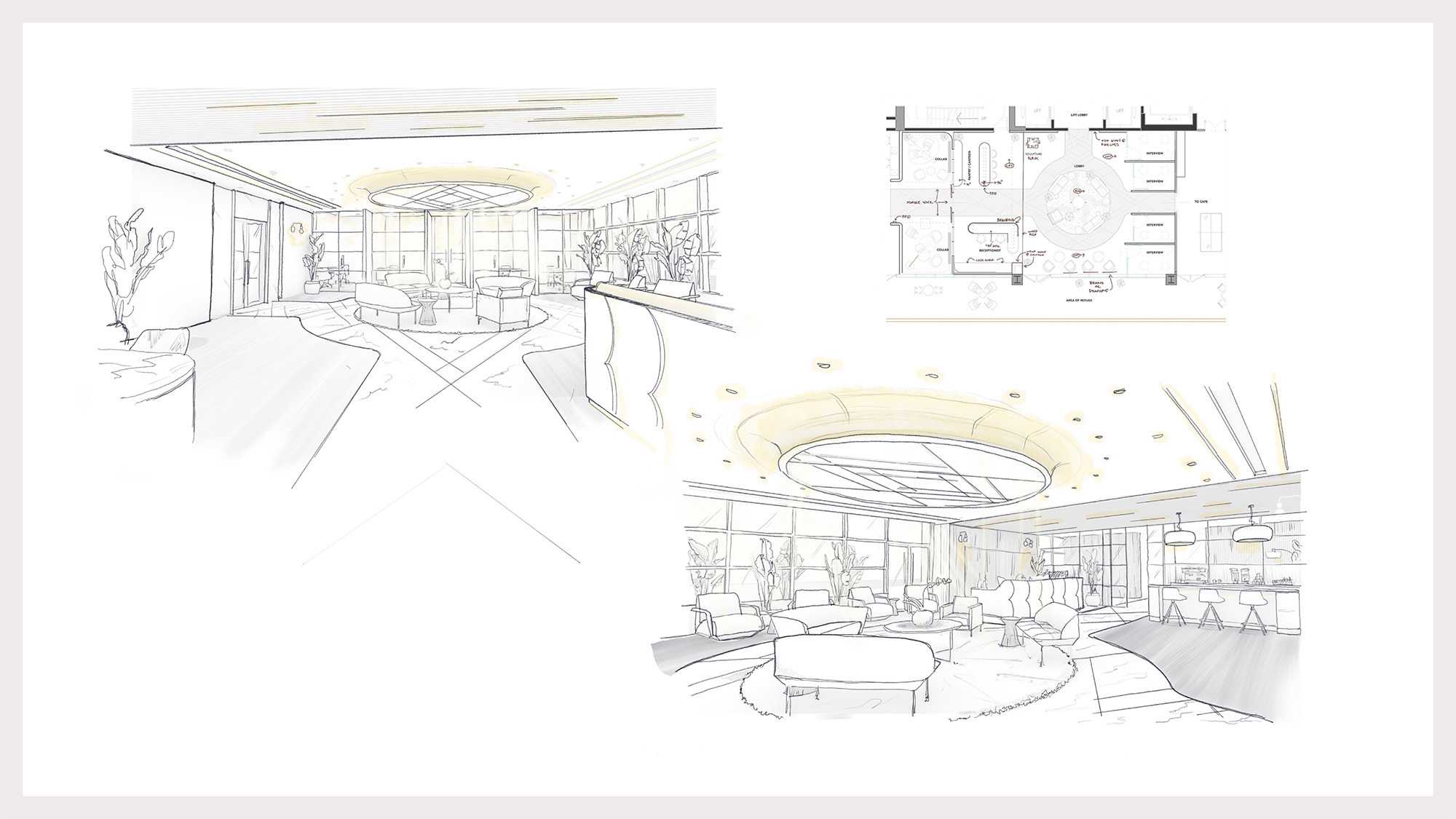
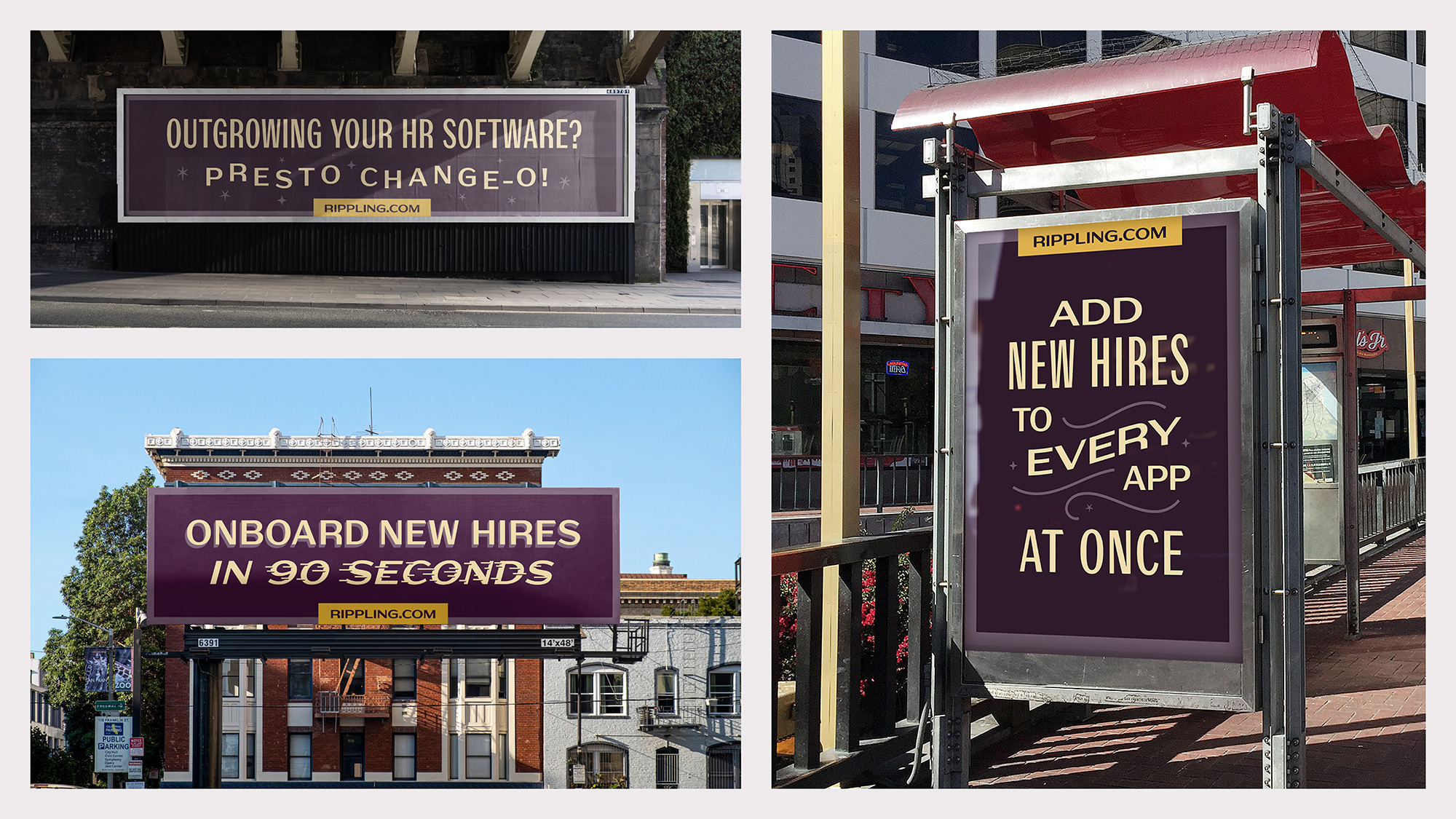
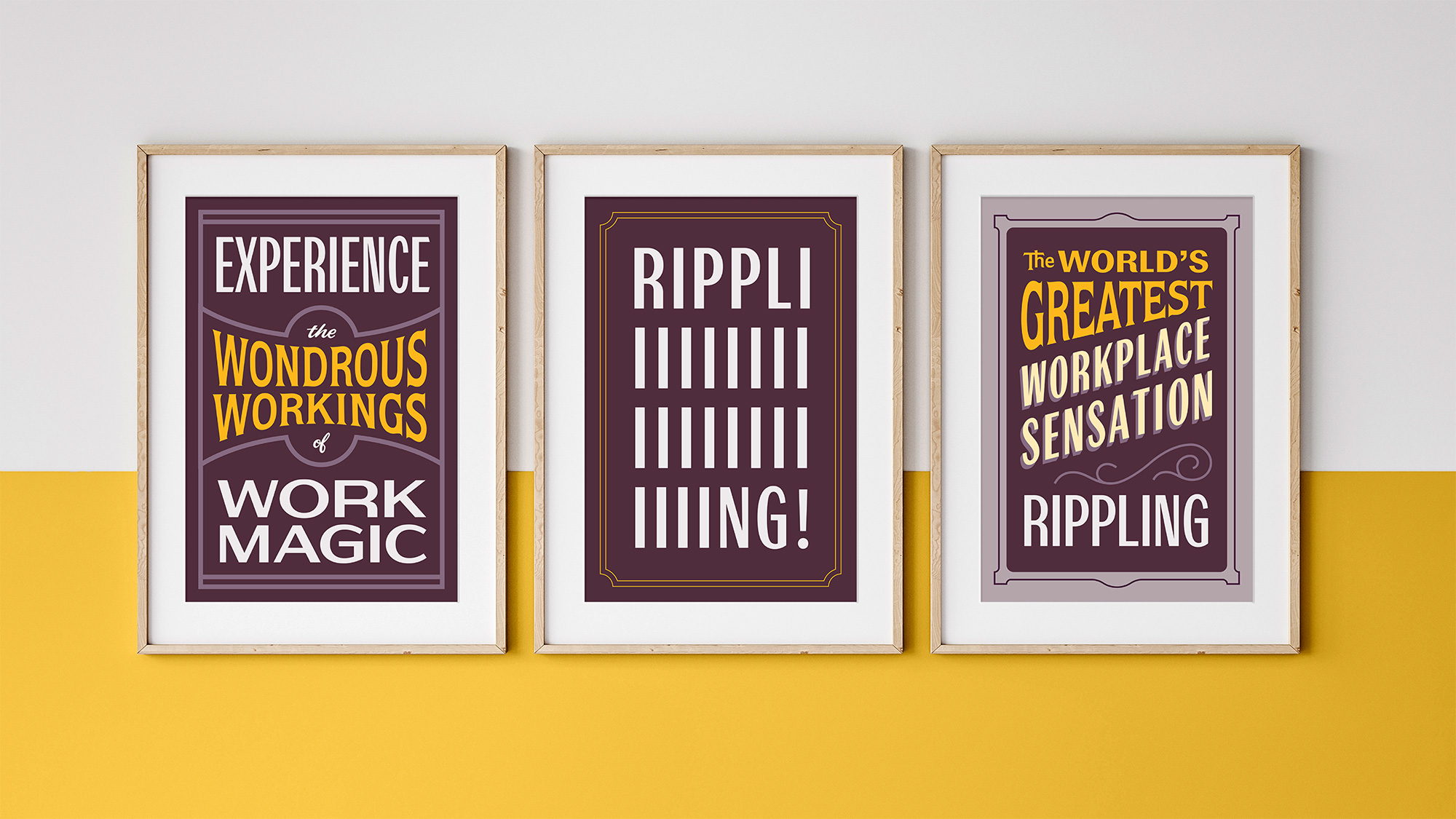
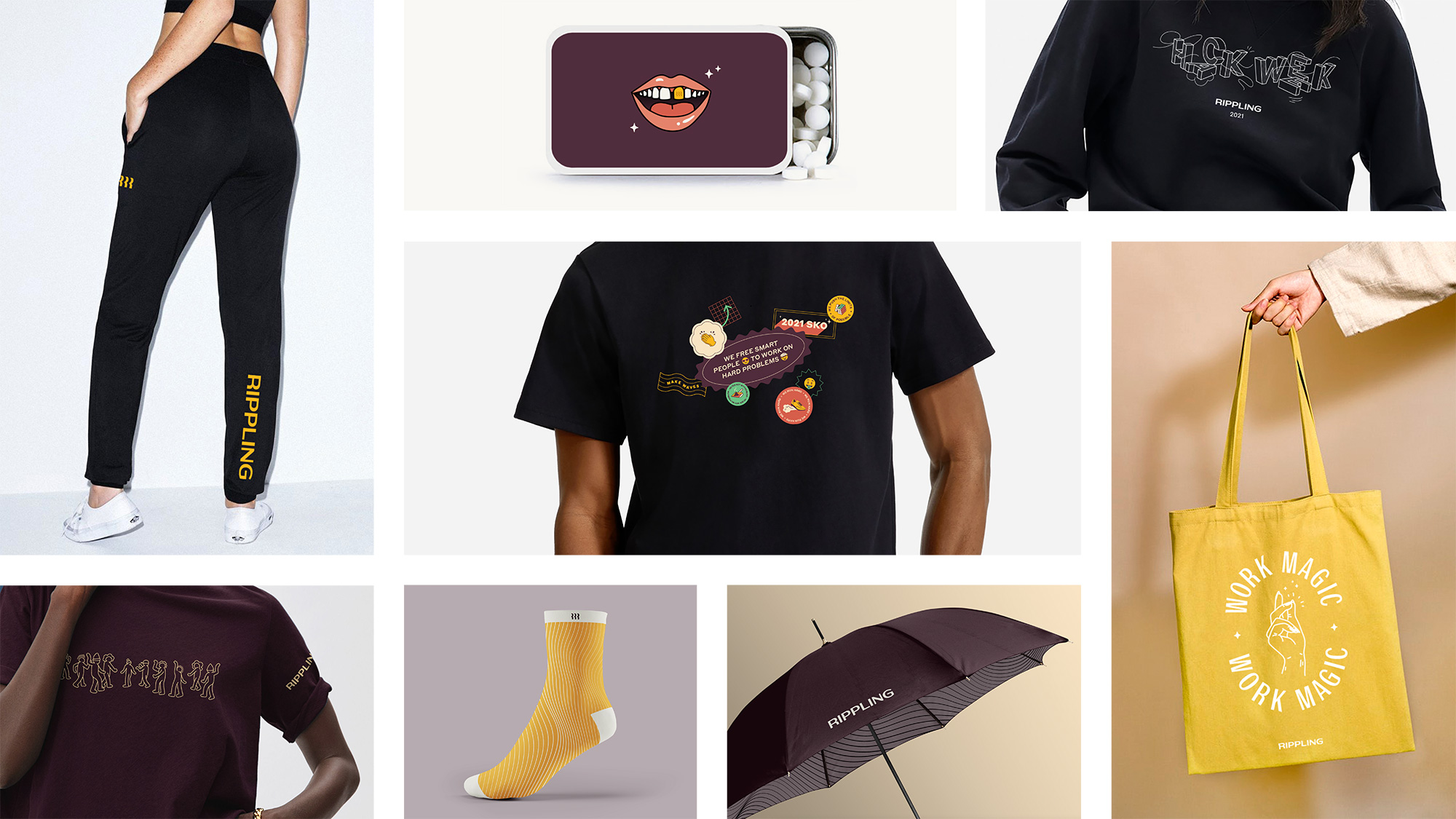
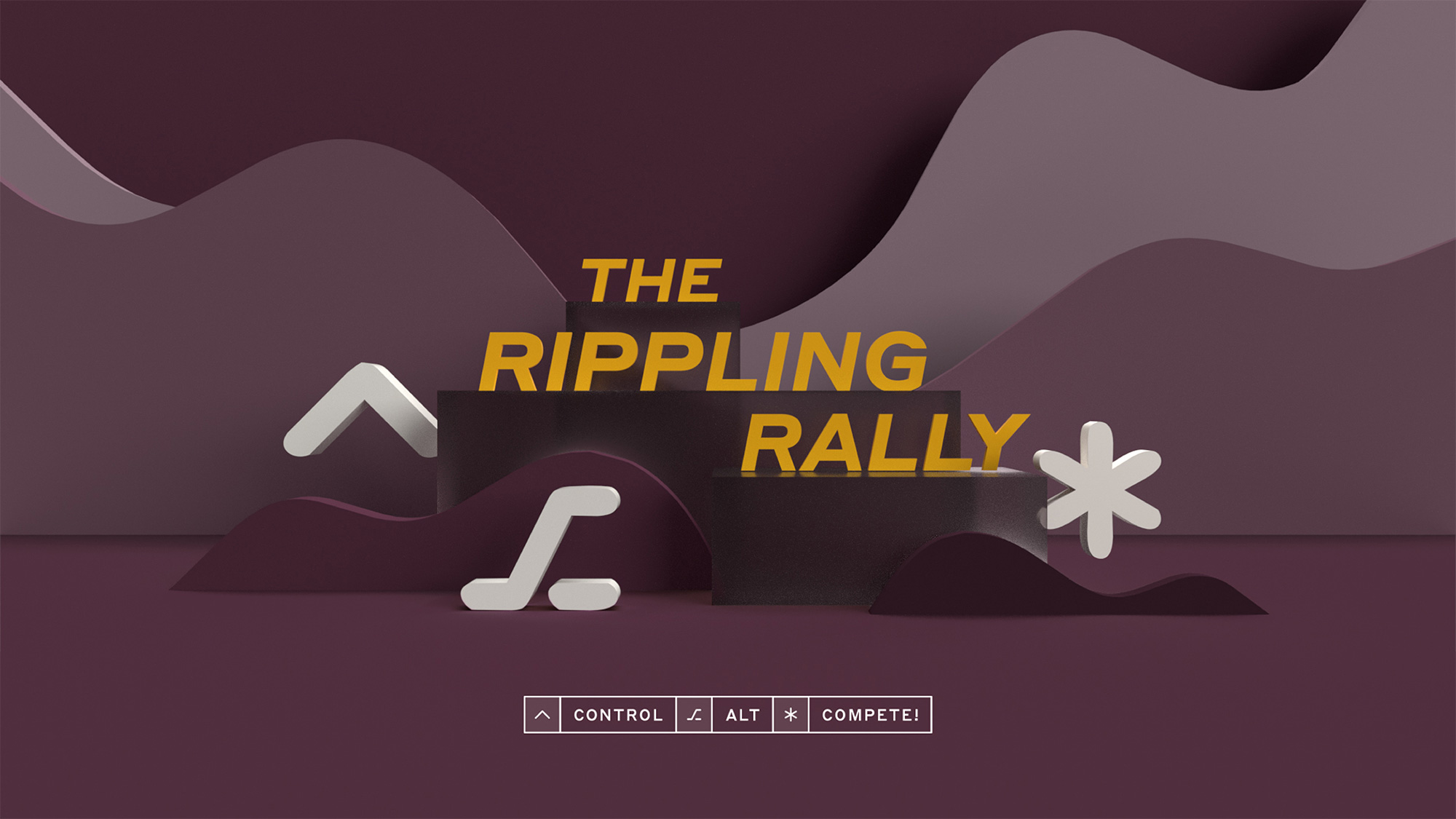
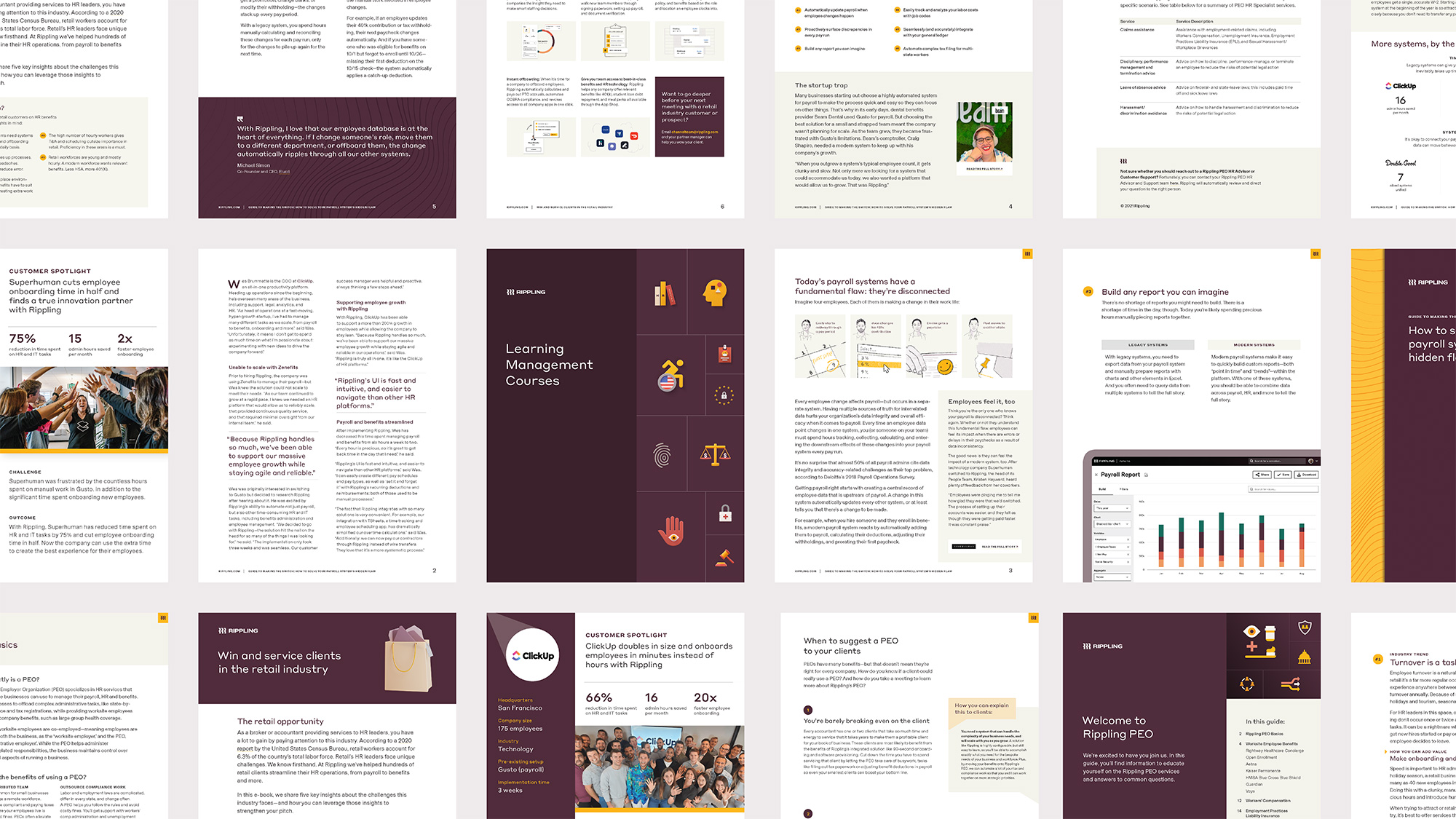
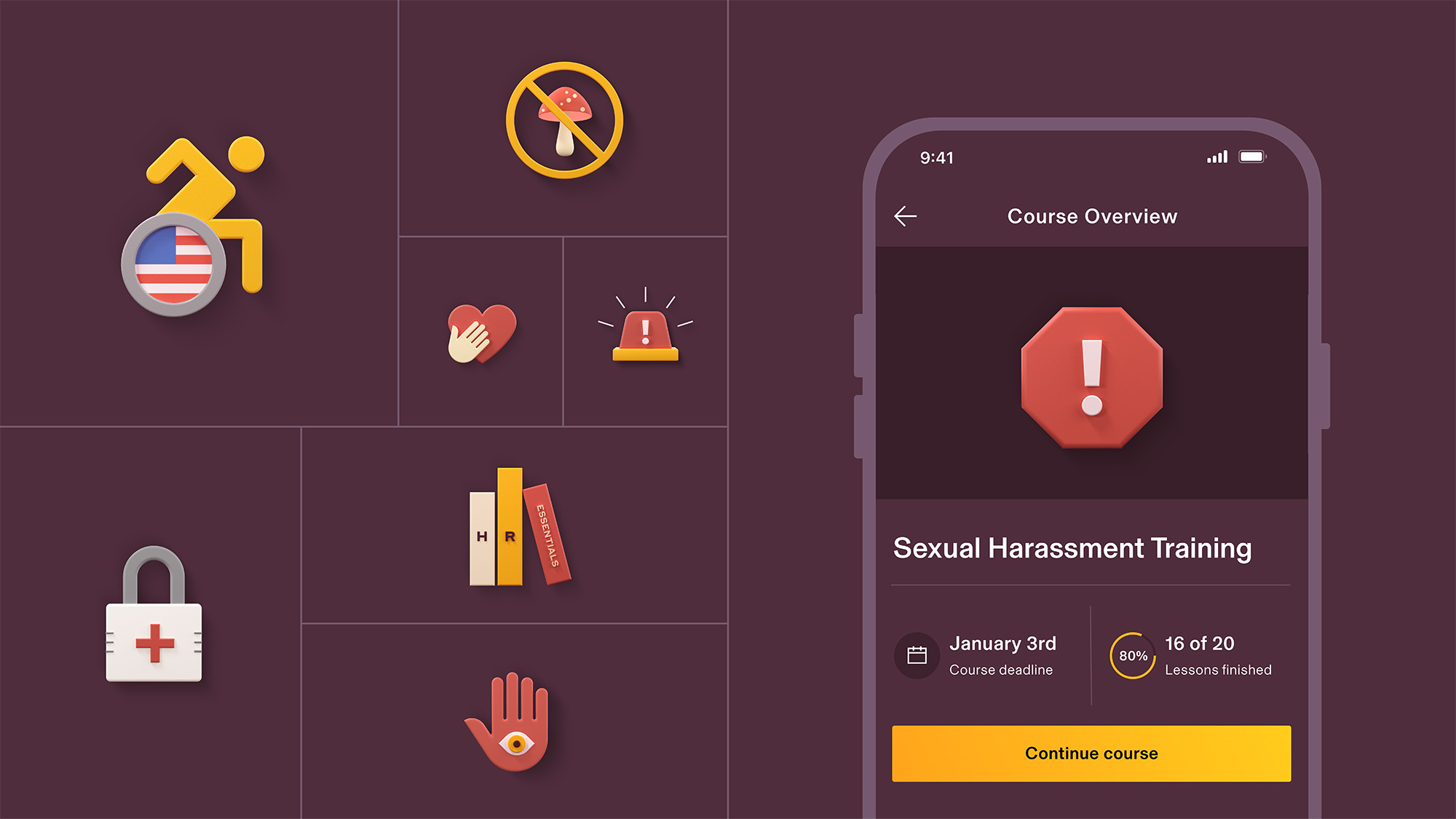
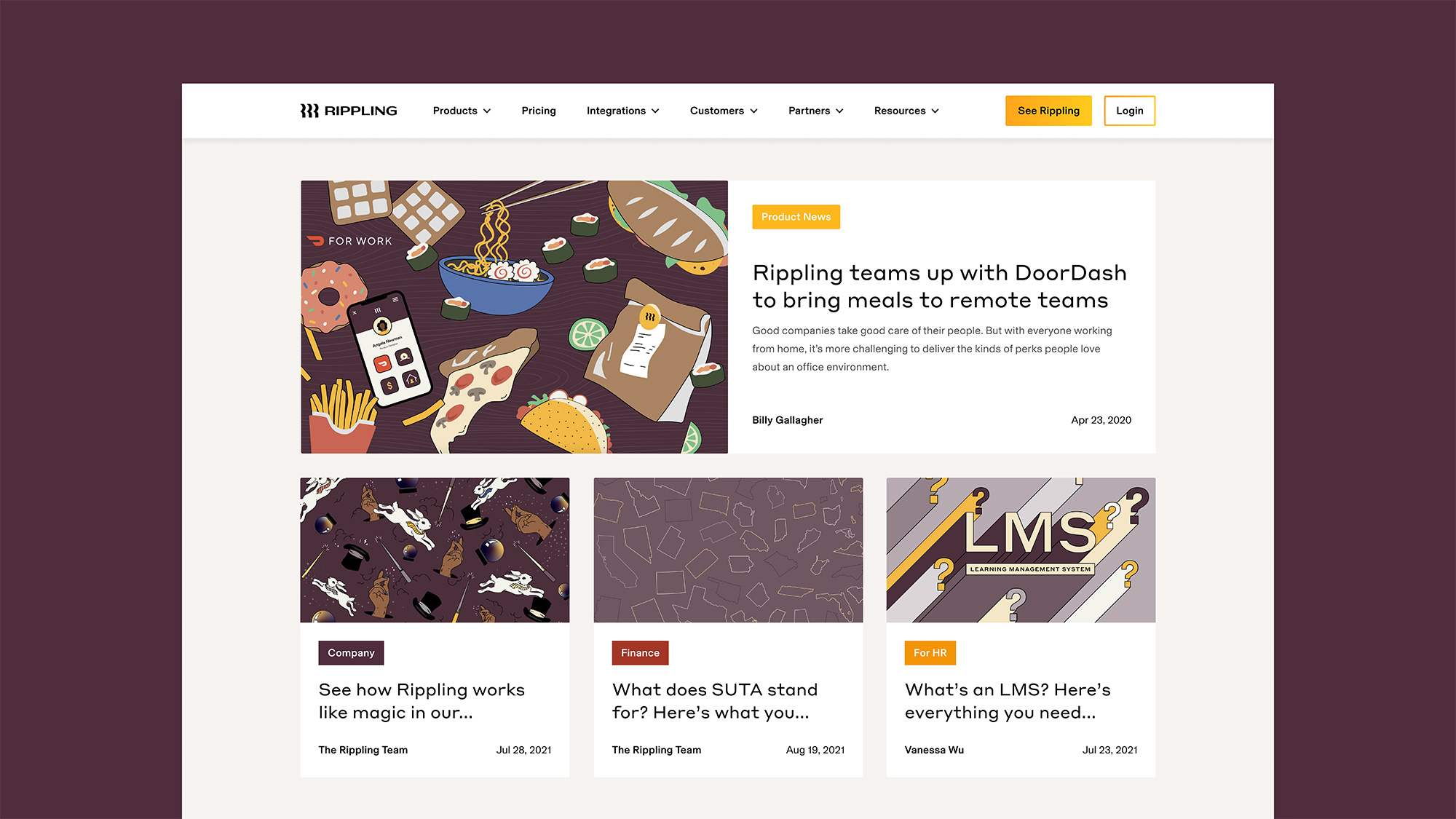
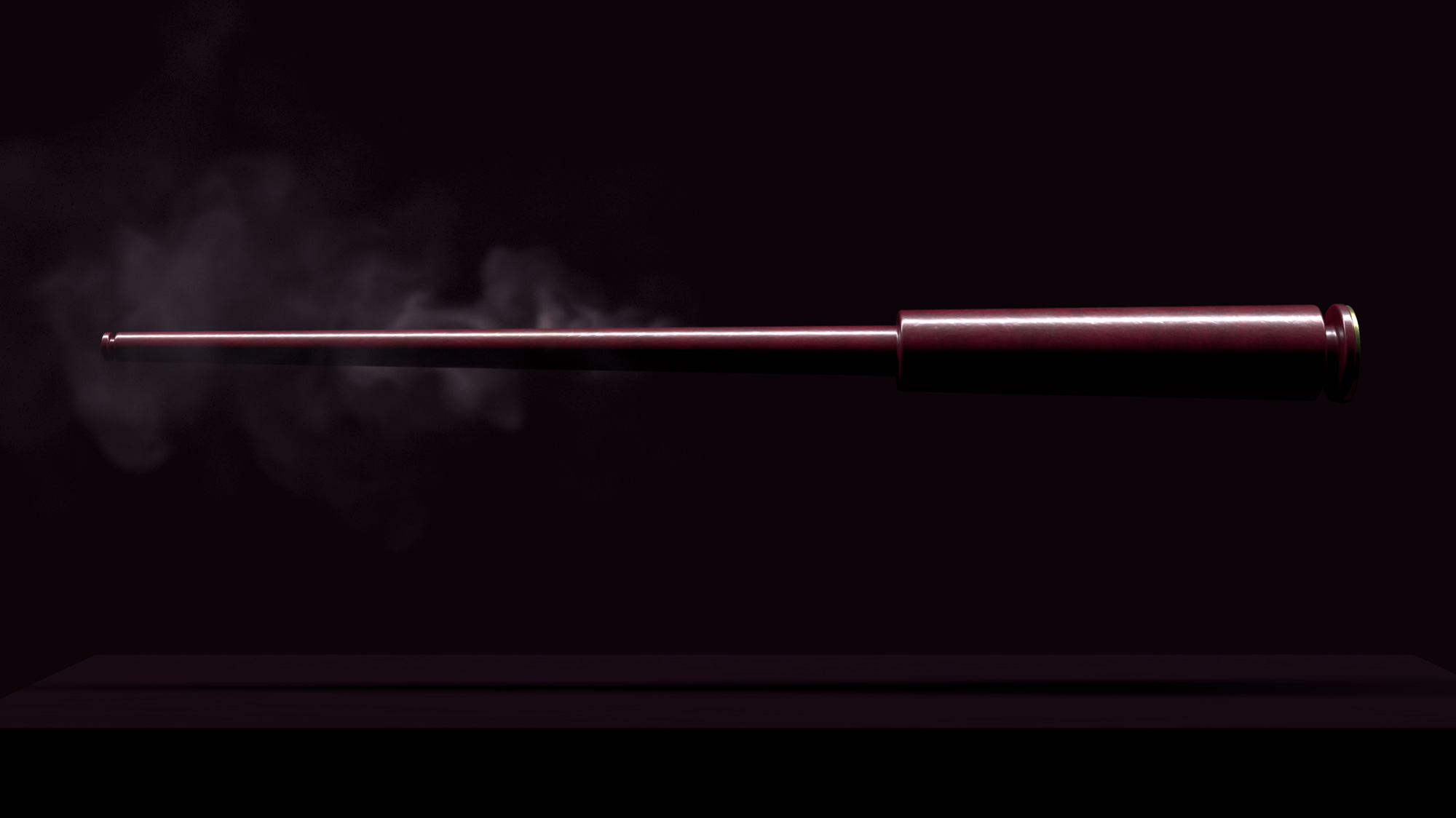

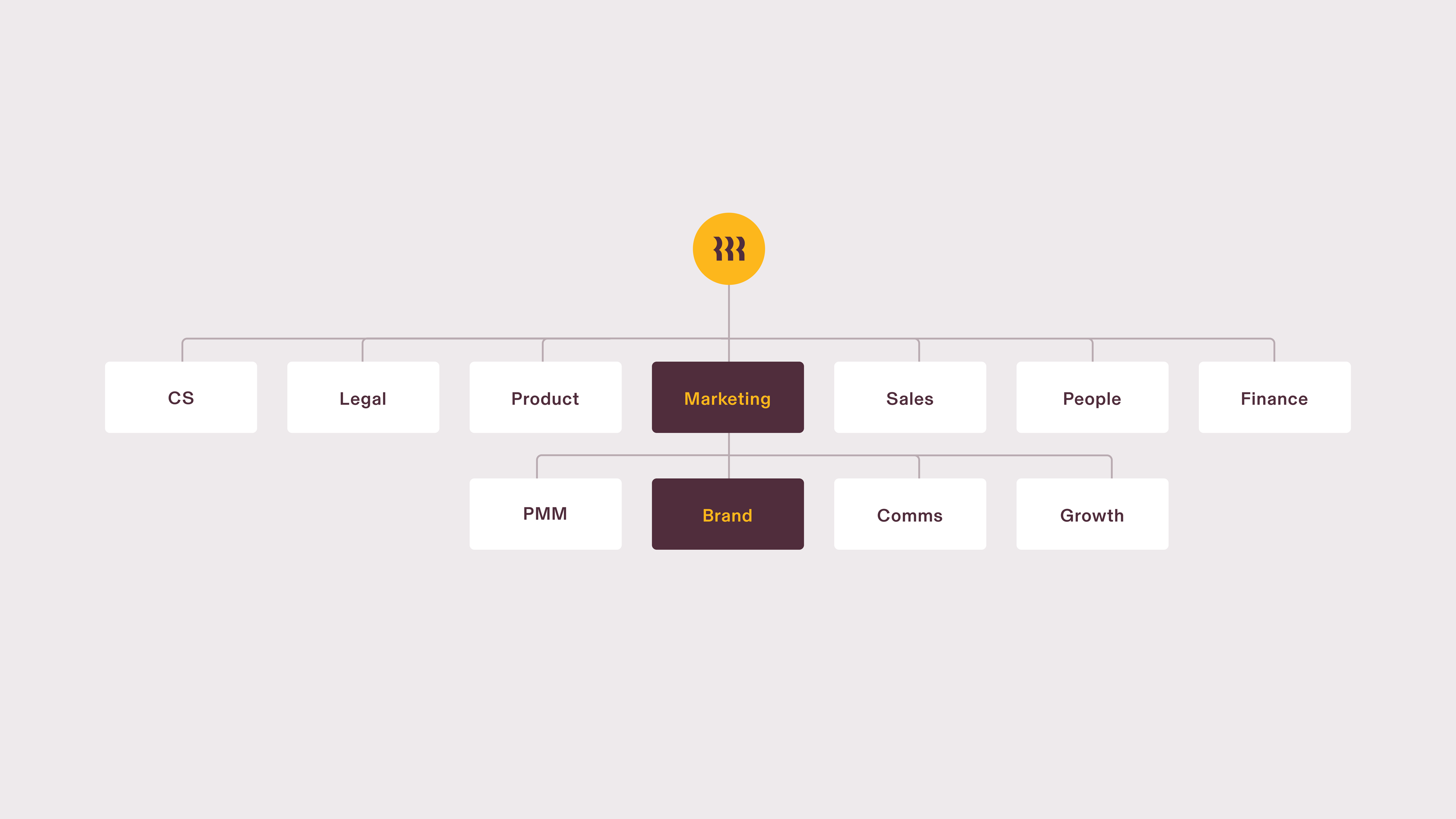
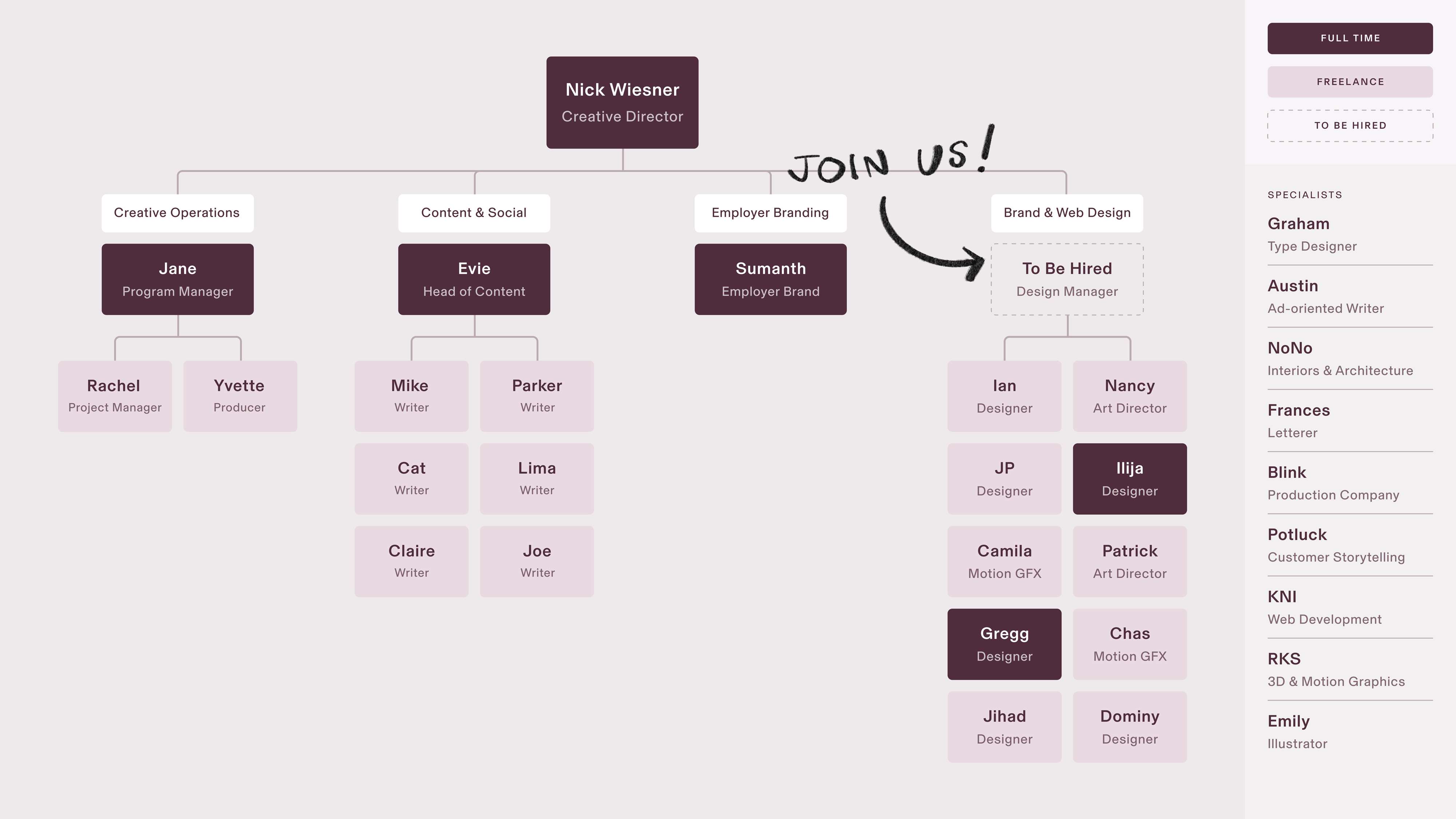

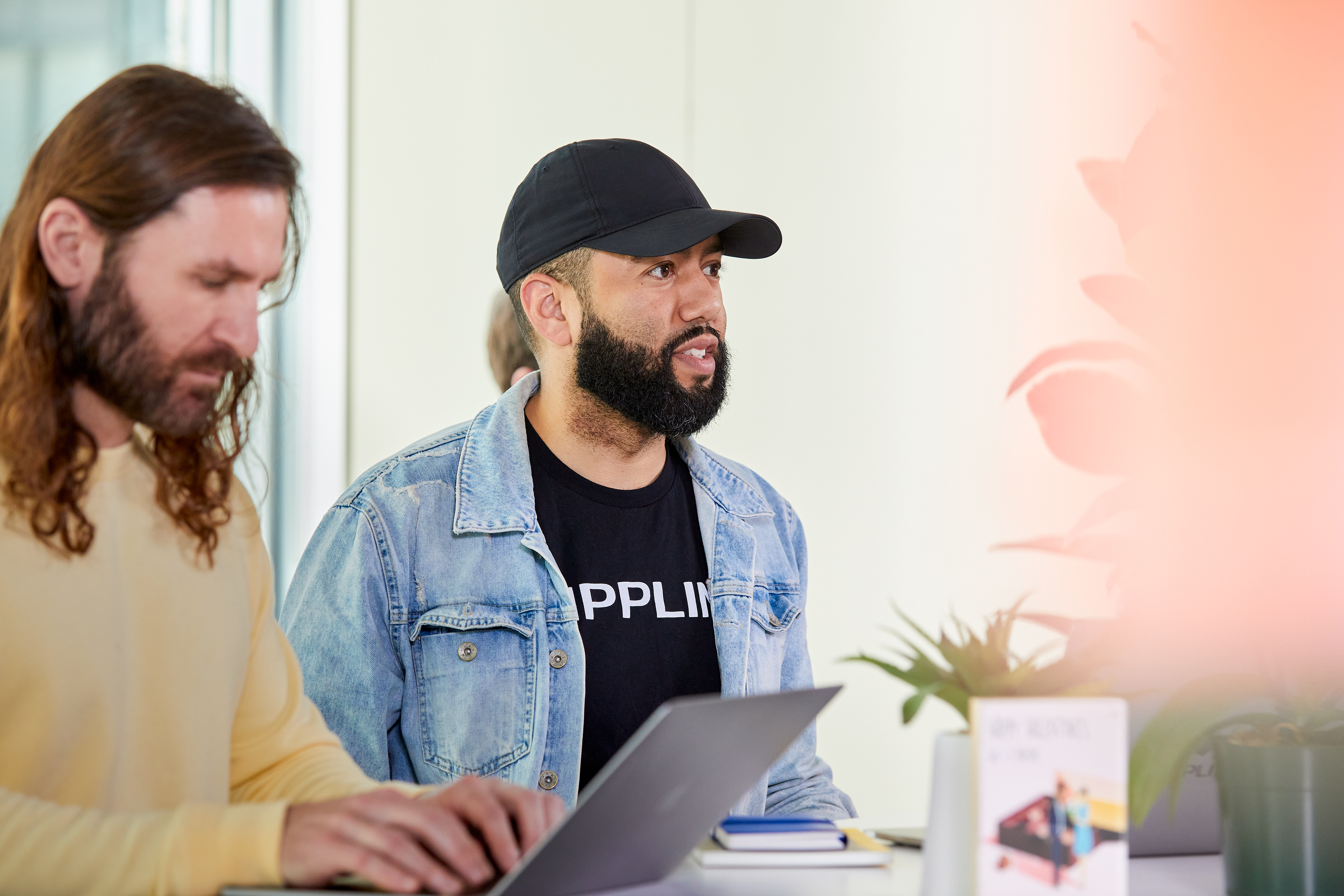





Comments
Please maintain comments positive and constructive. Comments that are a grievance against the company, product, or service and/or are unrelated to the work shown or the in-house team details presented will be removed.